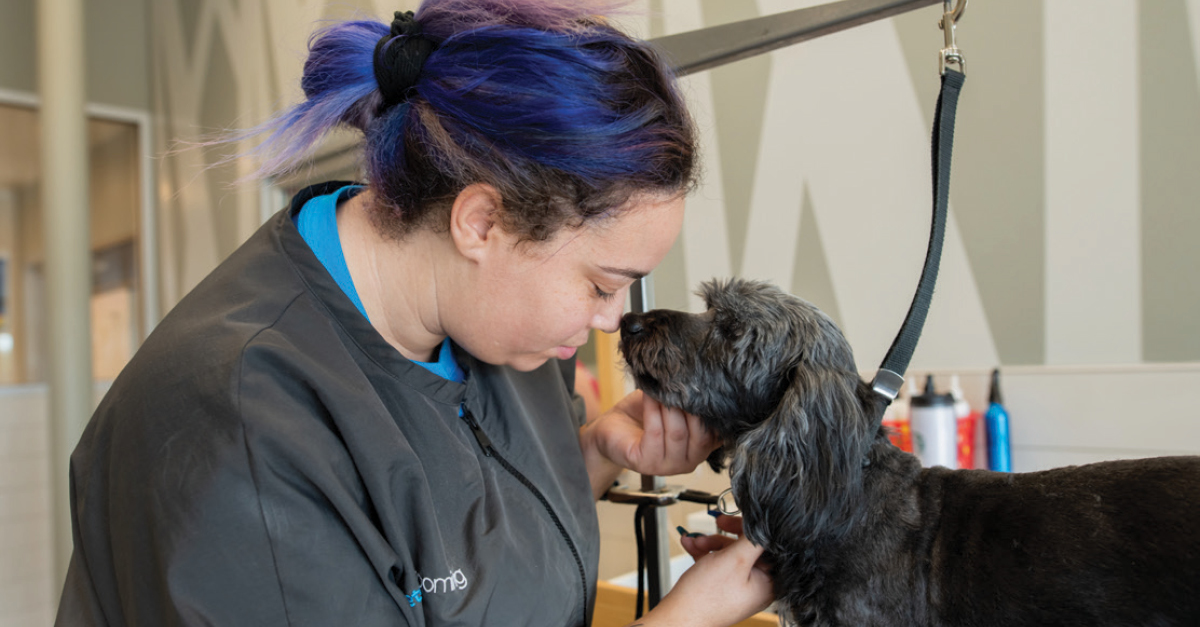The powerful effect of the human-animal bond
Annie knew she was willing to do what it took to work with dogs, her lifelong dream. “Dogs are my salvation,” she had said. “People always let me down. I can’t trust them, but my dogs are always there. Unconditionally.” Just like many other students, the power of the human-animal bond helped Annie graduate from Pawsperity’s extensive grooming program.
After spending years living in a trailer with her abusive boyfriend and three children, miles away from any neighbors, she couldn’t imagine being in school. The prospect of entering a room full of people and engaging in conversation caused her anxiety to skyrocket. She didn’t like to be the center of attention; she didn’t want to be caught off guard. Unable to trust her own instincts, she was always on high alert, feeling agitated, defensive, and alone.
A lifetime of chronic stress and trauma had impacted Annie’s nervous system so much that everyday social interactions, not to mention the ability to form healthy, supportive relationships, were severely limited and laced with high anxiety and pain. When Annie interviewed for a spot in Pawsperity’s program—an opportunity to slowly get back on her feet—she knew that her complex PTSD would be a major barrier. It always was.
When Annie started Pawsperity’s program, she was terrified. When the group leader asked her to introduce herself, she became sick to her stomach. How was she going to get through this? She hoped that it wouldn’t end up like all the other programs she had started and never finished: the CNA training, the GED classes. Barely speaking the rest of the day, Annie focused solely on the dogs she was bathing. She tried hard to make them feel comfortable because if anyone could relate to feeling scared and out of control in a strange environment, it was her. Stroking their fur as she rinsed off the shampoo, she assured them that they would get through this stressful time together.
Over the next few weeks, Annie found herself engaging in small talk with the other students as they brushed out the dogs. There was something enjoyable about getting lost in the rhythmic movement of brushing out tangles, as it took her mind off the stress of her home life and eased her gently into the present moment.
This newfound calm—a sense of safety—allowed her to feel more connected to her peers. For the first time in years, Annie felt like she was part of something. The empowerment she felt began to trickle into her home life. She became more confident in her parenting skills and in her ability to turn her life around.
This inner trajectory—from anxiety and social isolation to a growing sense of connection and self-efficacy—is common for Pawsperity students and closely parallels the path from generational poverty to financial independence and housing security. And, while there are several factors that contribute to these psychosocial changes—like access to a supportive learning community that fosters a growth mindset, and intensive case management to help students navigate crises and find housing, childcare, and transportation—the human-animal bond plays an important, yet often overlooked, role in the healing process for most students.

